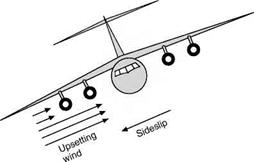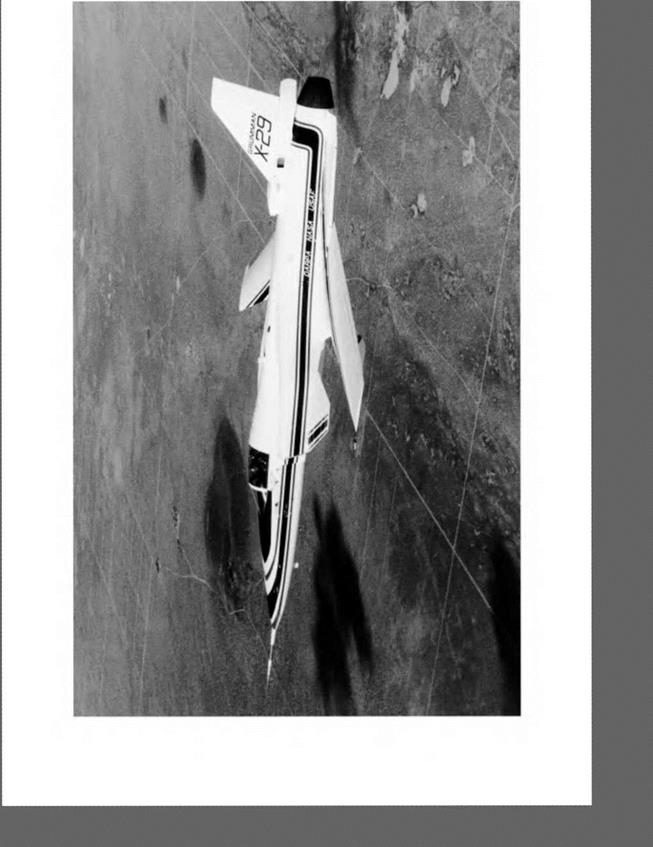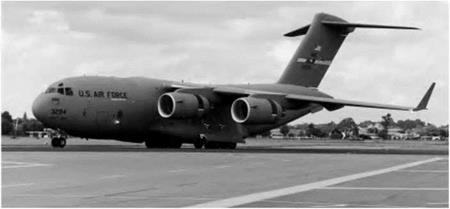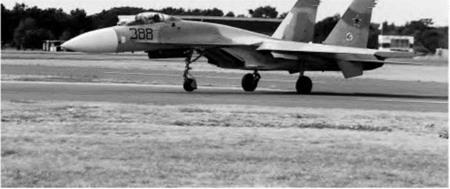Directional stability
We shall first try to consider directional stability by itself, if only as a means of convincing ourselves that the two are so interlinked one with the other that
|
|
Fig 9.10 Effect of low-slung fuselage and engine pods on lateral stability
they cannot be disposed of separately. In order to establish directional stability we must ensure that, if the aeroplane is temporarily deflected from its course, it will, of its own accord, tend to return to that course again. This is almost entirely a question of the ‘side surface’ or ‘fin area’ which has already been mentioned when dealing with lateral stability, but here it is not a question of the relative height of this side surface, but whether it is in front of or behind the centre of gravity (Fig. 9F). When an aeroplane is flying in the normal way the airflow will approach it directly from the front, i. e. parallel to its longitudinal axis. Now imagine it to be deflected from its course as in Fig. 9.11 overleaf; owing to its momentum it will for a short time tend to continue moving in its old direction, therefore the longitudinal axis will be inclined to the airflow, and a pressure will be created on all the side surfaces on one side of the aeroplane.
If the turning effect of the pressures behind the centre of gravity is greater than the turning effect in front of the centre of gravity, the aeroplane will tend to its original course.
If, on the other hand, the turning effect in front is greater than that behind, the aeroplane will turn still farther off its course. Notice that it is the turning effect or the moment that matters, and not the actual pressure; therefore it is not merely a question of how much side surface, but also of the distance from the centre of gravity of each side surface. For instance, a small fin at the end of a long fuselage may be just as effective in producing directional stability as a large fin at the end of a short fuselage. Also, there may sometimes be more side surface in the front than in the rear, but the rear surfaces will be at a greater distance. All the side surfaces of an aeroplane, including that presented by wings with dihedral, affect the directional stability, but to the fin is allotted
Fig 9D Sweep forward (opposite)
The Grumman X-29 research aircraft with forward-swept wings. Forward – swept wings have the same advantages in high-speed flight as swept-back wings, but give a better spanwise distribution of lift, leading to lower induced drag.
|
|
|
|
Fig 9E High fin
A massive high fin and pronounced anhedral are evident on the McDonnell Douglas C-17.
the particular task of finally adjusting matters and its area is settled accordingly.
There is a very close resemblance between the directional stability of an aeroplane and the action of a weathercock which always turns into the wind; in fact, one often sees a model aeroplane used as a weathercock. The simile, however, should not be carried too far, and the student must remember that there are two essential differences between an aeroplane and a weathercock – first, that an aeroplane is not only free to yaw, but also to move bodily sideways; and secondly, that the ‘wind’, in the case of an aeroplane, is not the wind we speak of when on the ground, but the wind caused by the original motion of the aeroplane through the air. This point is emphasised because of the idea which sometimes exists that an aeroplane desires to turn head to wind. If such were the case, directional stability would be a very mixed blessing.
|
Correcting force on fin
|
Fig 9.11 Directional stability
(a) Before disturbance; (b) after disturbance
|
Fig 9F A classic flying boat (By courtesy of the General Dynamics Corporation, USA) The large side area of the hull was balanced, from the lateral stability point of view, by the dihedral on the main planes and the high fin at the rear. |
|
|
Fig 9G Fin and directional stability
A Sukhoi Su-27 blasting down the runway with nosewheel lifting clear of the ground. Note the two large fins with dorsal extension below the tailplane. This aircraft displays exceptional manoeuvrability and control at low speed.

















